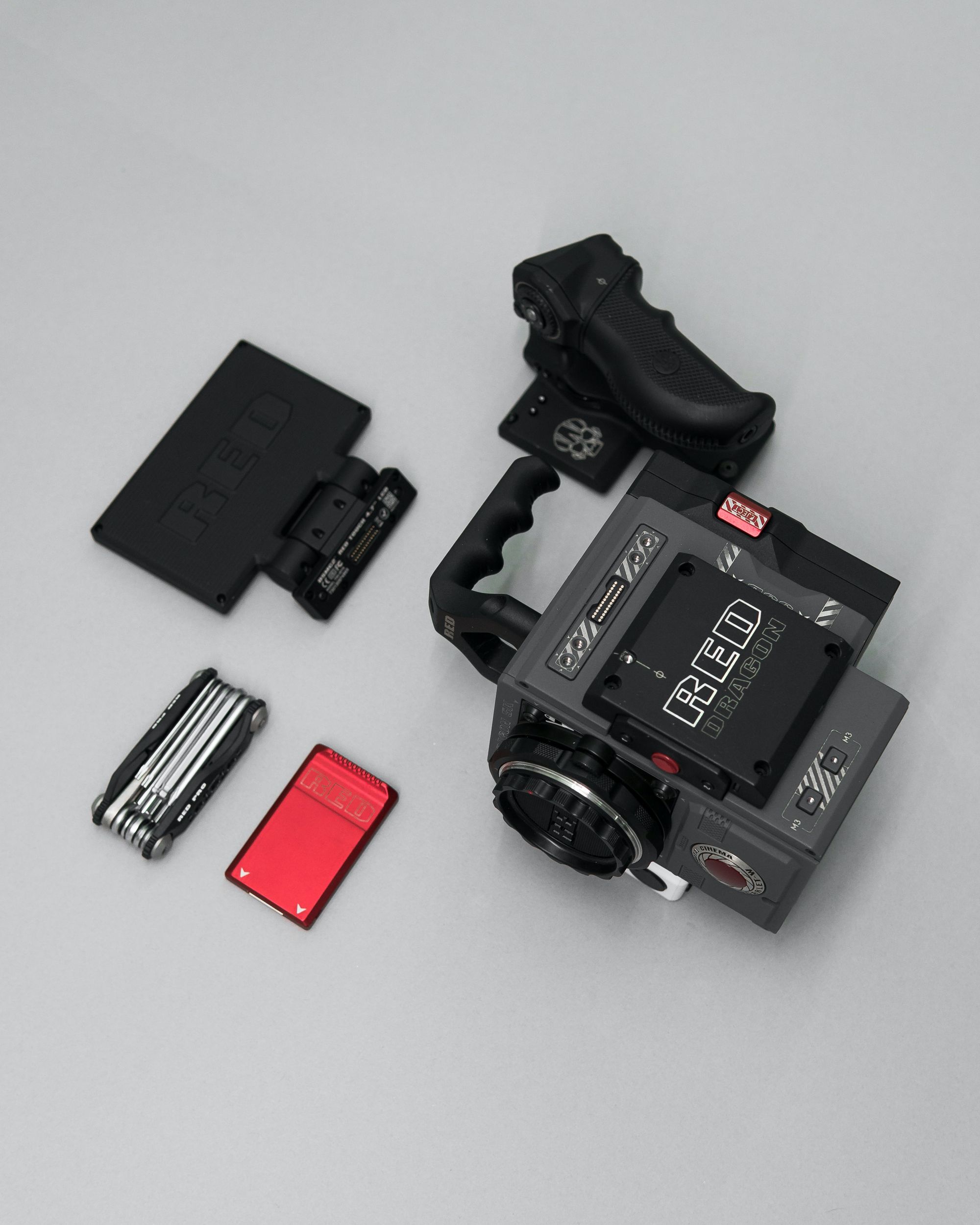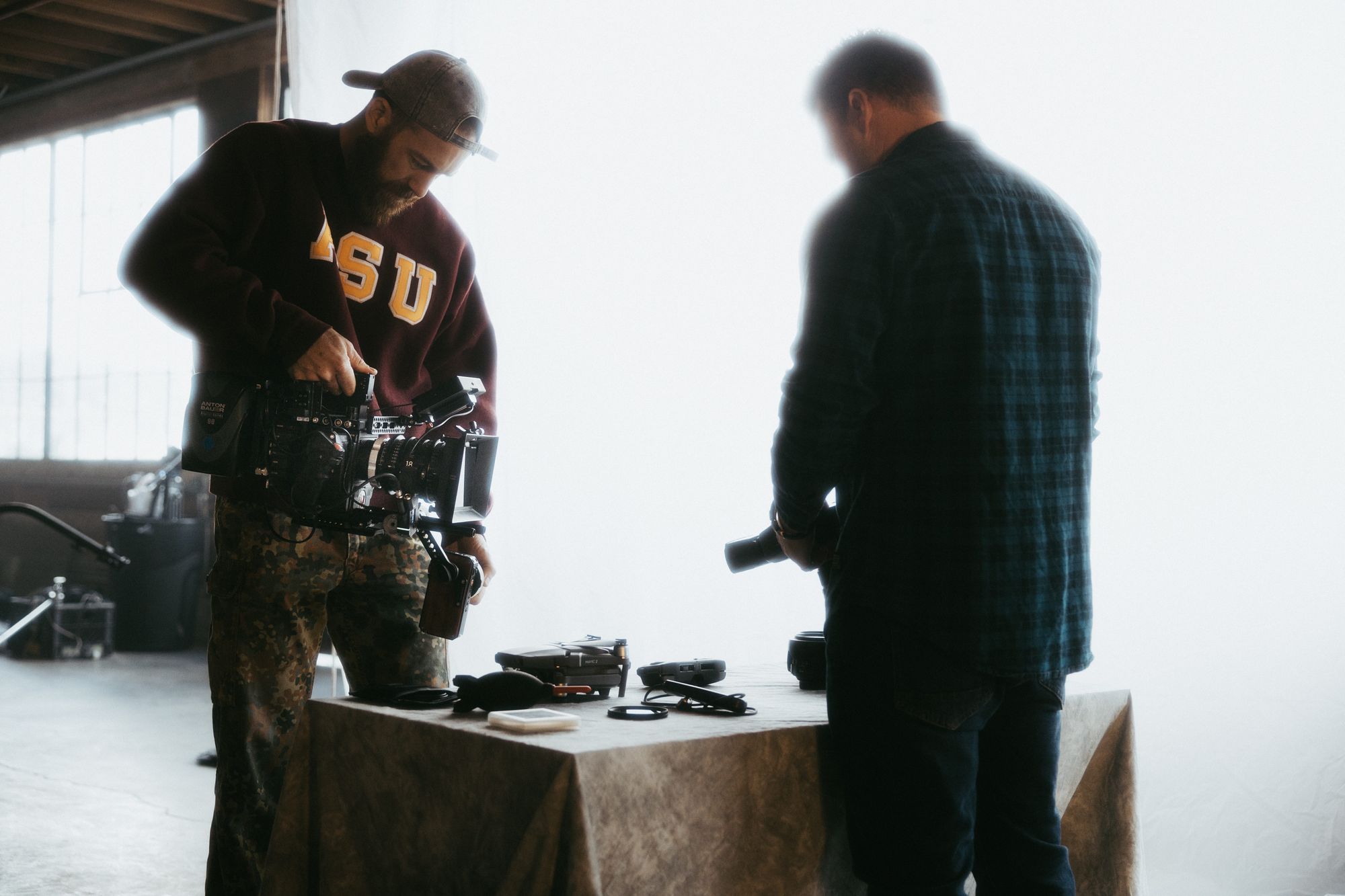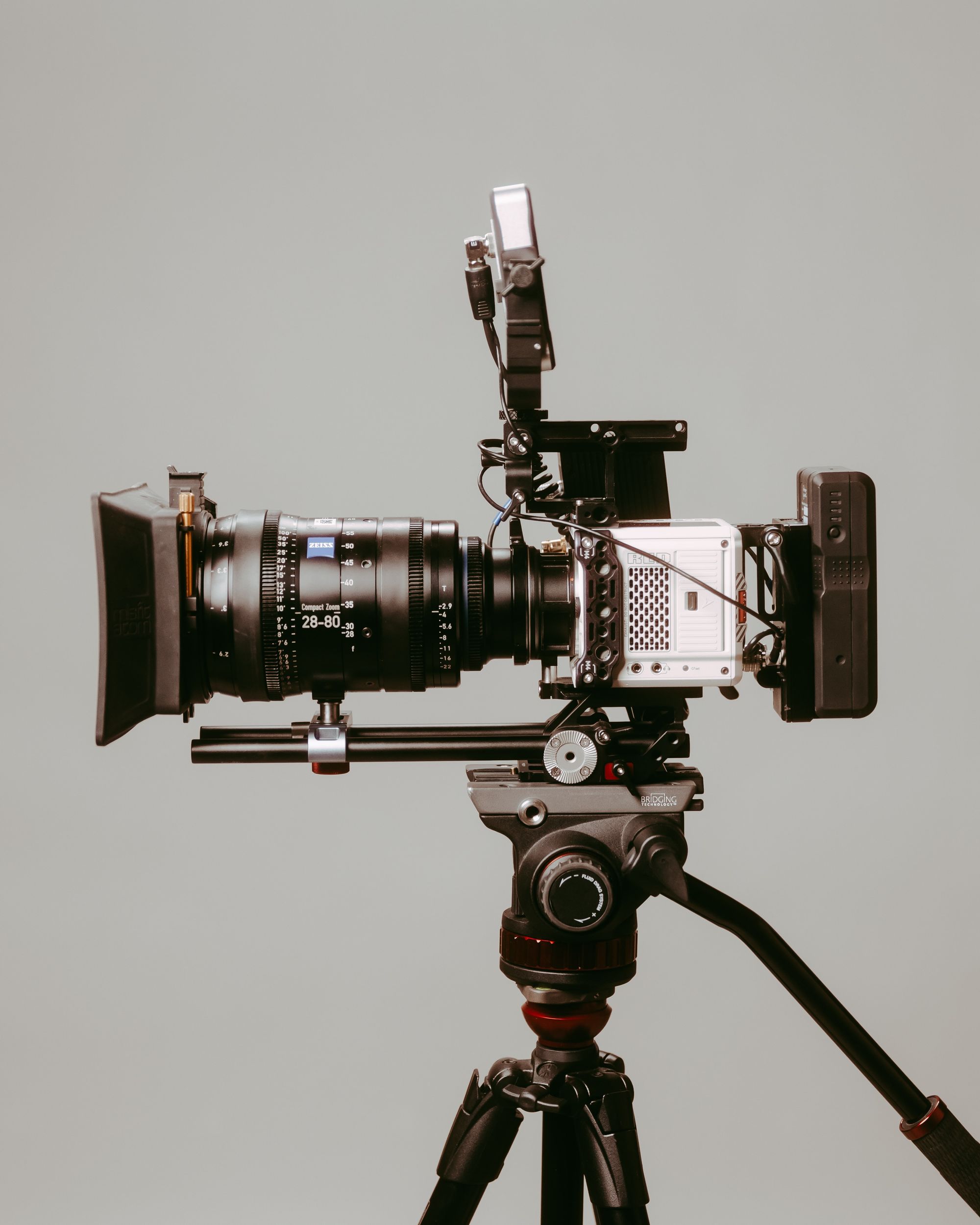Exploring a RED Camera? Get Your Complete Overview Here
Rent film gear from local filmmakers.

Rent film gear from local filmmakers.
What you need to know about a RED camera
You might think you know everything about RED cameras, but the company recently changed their whole cinema camera lineup. Their previous camera options are not to be continued; instead, they've elected for much simpler body and sensors options. RED officially now only offers one option for their camera body and brain.
What does this mean?
Well, it's a similar concept as to your favourite "build-your-own-salad" bar. Pick up a plate and start building. RED has disrupted its whole product chain to give everyone the same jumping-off point. Same body and brain for everybody, and then choose your delicious fillings – sensor, lenses, etc. to allow you to build the best RED camera specified to your tasting. Just remember, like the salad bar, "dress" costs extra.
With that said, allow me to introduce the RED DSMC2.
RED DSMC2: Camera body & brain

The RED DSMC2 is officially the company's new camera body and brain. It houses both the image sensor and the advanced computing components.In the DSMC2, you'll have to buy or rent a DC IN power, as this version doesn't include a power module or port expander to power the camera. In fact, there's a couple of things you'll need to acquire (apart from the actual body and brain itself), here among an expander, battery, appropriate lens mount, display to see your image, and media cards.
Unlike the previous RED models, the DSMC2 can change lens mounts. Meaning, you can have an EF mount. And then, as soon as your inheritance gets released and you can afford the PL lens mount, simply change the lens rather than get a whole new body.
RED DSMC2: Specs
RED might have removed a couple of accessories, but they haven't slacked on the specs. The RED DSMC2 has some incredibly impressive specs, here among:
- Interchangeable Lens Mount
- Wireless Control
- Max Data Speed — 300 MB/s
- R3D RAW, Apple ProRes, Avid DNxHR/HD
- Integrated Media Bay
- Included OLPF (Upgrade Option)
- Cable-free Peripherals
Explore all the "why's" of a RED camera

I admit, a lot of stuff went down in 2007; Britney Spears shaved her head, Beyoncé was singing on top of her lungs how "everything he owned was in the box to the left," and Transformers aired (apparently, we are not alone). Overall, 2007 was a busy year. Most crucial of all the events, however – the RED camera surfaced.
A lot of credit must be given to RED, who practically (not entirely, but close enough) invented digital cinema. Their cameras are a head-turner and a jaw-dropper and changed every filmmaker's attitude toward HD and film. Suddenly a technology we assumed was generations away was available and sitting right in front of us, and everyone was dying to get their hands on it.
Let's take a look at some of the things that make RED cameras the it-item of this and every season, together with an overview of the specs you'll get when shooting on RED.
Ultra-high resolution
Right from the start, RED has focused on creating cameras with ultra-high resolution. Often you'll find that newer camera manufacturers have trouble nailing that 8K footage – to put that into perspective, RED has been doing that for 5 years. Only 8 years after Britney shaved her head – they certainly got over that quickly.
When dealing with that many pixels, you'll see an increase in low-light capability whenever you downsample the image to your final resolution for delivery. You get a resolution that is 16 times higher quality than HD, and you get to film with a frame big enough to be printed and displayed on a billboard along the highway without scaling *whaaat?!*.
Of course, you face the risk that your pixels are crap (excuse my French). Meaning, despite thousands of pixels, you won't get a cinematic image. Whenever you increase the number of pixels, and the camera sensor size stays static, you could potentially diminish the camera's sensitivity. According to RED, only old cameras face this problem, and they claim to have overcome this problem with really, really (really) high-quality pixels.
Filming in RAW & ProRes Proxies
Filming in RAW is awesome! It means you can go back in post and adjust exposure and white balance. That means that nothing is over till the fat lady sings. That's camera-language for "until you've rendered the locked master of your project".
Granted, shooting in RAW isn't only a RED camera thing. However, the company was the first to offer this ability and invented the compressed RAW codes, which hold a very tight patent of the technology and the main reason we don't see a flood of cameras that can shoot in ProRes RAW internally.
Variable frame rates

The great thing about RED cameras (apart from the thirty other great things) is the RED's cameras offer fully adjustable frame rates. Meaning – you get to film at any speed from 1 FPS to your camera's max FPS and then every possible speed in between. Imagine, you get to choose to ride a turtle and take a seat in Lewis' Hamilton's 2-seater (quite the image, ha?).
Bonus info! You'll also have selectable aspect ratios. Forget about being stuck in a 16:9 or 4:3 world. Vary your aspect ratios to fit every filming purpose.
Slow-motion capabilities
It's hardly a secret that RED cameras can shoot in incredible high frame rates.
Result: you get incredible slow-motion footage.
Although, you do need to make a slight compromise here (all great love stories do). The high frame rates come with an additional sensor crop which can be substantial. While the image quality is still *incredible, you won't get 240 fps with a full-frame sensor read-out.
Colour science with accuracy
It's hard to compete with colour codes as such you'll find at ARRI (but come on! That's ARRI!). RED offers fantastic colours, and you'll find loads of colour information stored in its codec.
Usually, you'll be shooting in RAW, so colour accuracy is essential. Any colour profile or space that you'd choose is tagged into the metadata to be later recalled in the grade.
Recently, RED debuted their brand-new Image Processing Pipeline, also known as IPP2. Prior the company had numerous combinations of colour spaces and gammas to choose from. However, as the company is constantly evolving and giving every enthusiastic filmmaker homework to do, they wanted to unify the colour spaces and gammas to provide a new, future-proof, HDR-ready standard for RED cinema camera workflow.
High dynamic range

RED is known for having an outstanding dynamic range. Most new RED cameras, you can expect about 16.5 stops of dynamic range. But again, with RED's pace of evolvement… expect the unexpected.
The RED cameras ability to capture such a high dynamic range comes from its ability to capture two nearly simultaneous exposures.
Keep in mind; high dynamic range doesn't mean you should give up on shaping the light in your scenes or that you can start skipping past NDing a bright window (we all know how it looks when you skip leg day… don't do that to your footage).
Adjustable compression ratios
The RED ecosystem offers filming in RAW while having file sizes that won't fill up all of your hard drives. RED utilizes a compressed RAW system, meaning you can adjust the compression ratio from 2:1 to 22:1.
A camera such as the Canon C200 will not let you choose your compression ratio. However, the good-old BMPCC 4K and 6K will let you do just that, too, but the range of ratios is smaller, and there are very noticeable differences in quality at higher ratios.
In-camera proxies for post-production

It goes without saying (writing, I guess, will do). If you're filming in 8K, it's gonna take a long time on the backend. I mean, simply transferring the files can take days…
Patient people will say, "Rome wasn't built in a day" and "you get the chicken by hatching the egg, not by smashing it". Technically, I see the point. Personally, I'm just more from the school about "Just do it" and "Go hard or go home" (so, everything as long as Michael Jordan has made a commercial for it).
To avoid spending unnecessary time, create proxies for editing regardless of what you're shooting. Initiating in proxies will speed up the editing time and make it possible to work with editors remotely. And the thing about a RED camera is that proxies can be created in-camera. So, you get right to the good part (editing) while the full resolution media is backed up and processed on another machine.
Should I rent a RED camera?
Rent Camera Gear: Access Pro Equipment
qqHXJy6AWlc
Camera Hire: Take Your Production to The Next Level
71PttfqWPXk
Camera Rental: Save Money with Wedio
5sHshmF1n_Y
Closing thoughts
The best possible way to understand what you'll get when using a RED camera is to test it out. Set it up, shoot with it, pack it down – rinse and repeat.
Or, you might already be sold on the thought of shooting with a RED camera. In that case, find Danny D's pick of the 3 best RED cameras for you.
Looking for tips on other equipment? Look no further! See our article on essential camera equipment.
About the instructors
Rent RED cameras from local creators.
Save up to 40%.
Global Coverage included.
https://images.wedio.com/images/listing_images/images/1949004/big/IMG-0407-2.jpg
https://www.wedio.com/en/rent/red-cameras
https://images.wedio.com/images/listing_images/images/1923349/big/mieten_leihen_red_epic-w_helium_8k_withwedio.jpg
https://www.wedio.com/en/rent/red-cameras
https://images.wedio.com/images/listing_images/images/1939823/big/-84A8135.jpg
https://www.wedio.com/en/rent/red-cameras
https://images.wedio.com/images/listing_images/images/1913357/thumb/red_handheld_large.jpg
https://www.wedio.com/en/rent/red-cameras























